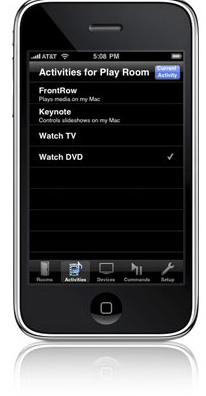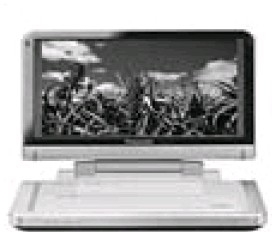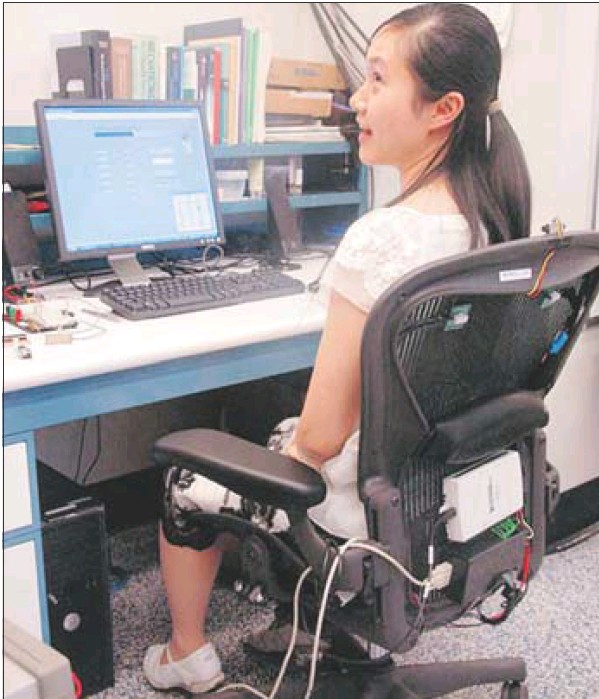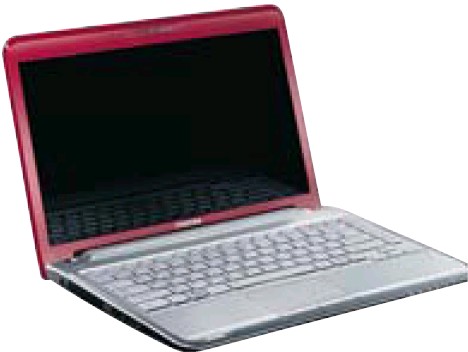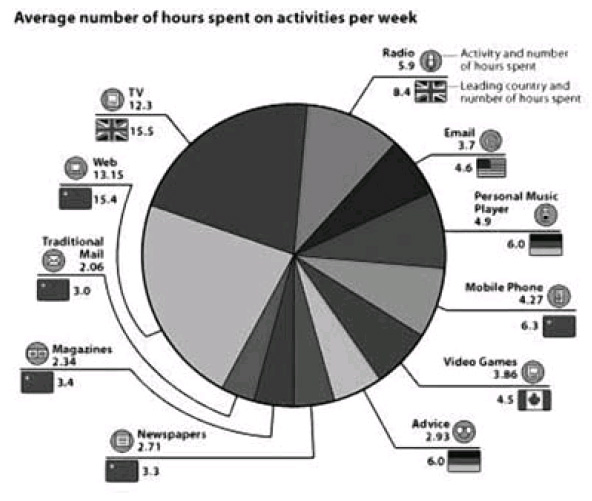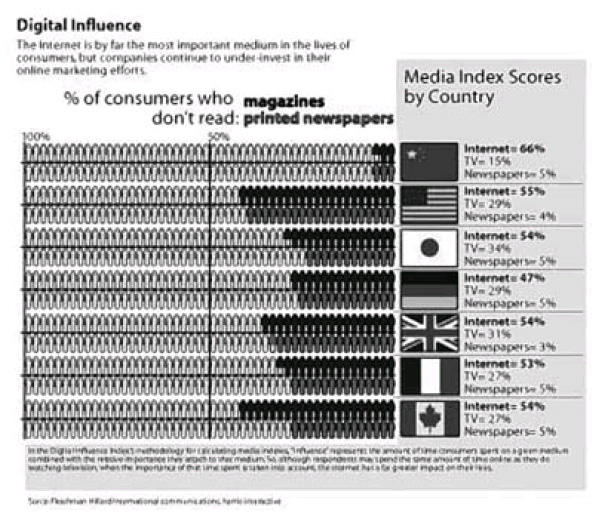Espresso Book Machine lets writers print their work without relying on traditional business model
Emily Jackson
Sun
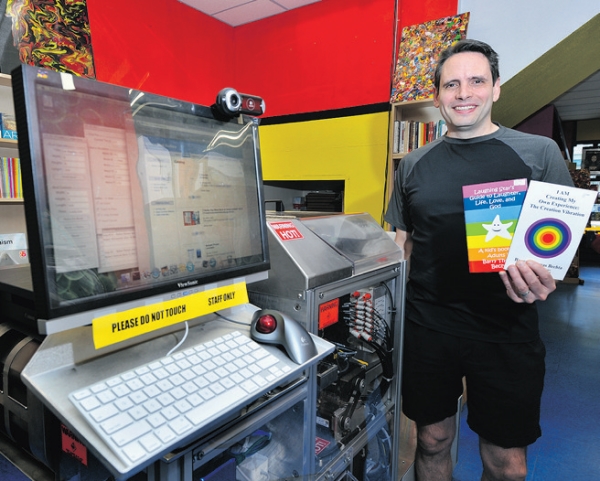
Barry Bechta is a manager at Oscar’s Art Books and an author. The book store owns one of the six ‘print-on-demand’ book publishing machines in Canada. The machine cost the bookstore $120,000. Photograph by: Jenelle Schneider, Vancouver Sun, Vancouver Sun
Attention, aspiring authors: Publishing books in Vancouver just got easier. B.C.’s first Espresso Book Machine — a machine that can print a high-quality, 100-page book in five minutes — now resides at Oscar’s Art Books, an independent, arts-focused bookstore on West Broadway at Granville Street.
“All you need is two PDFs — one for the cover, one for the book — and we can print it,” store manager Barry Bechta said. (PDF, or portable document format, is a cross-platform file format.)
Stigmas surrounding self-publishing or “vanity publishing” are slowly fading as new technologies have made it easier, and sometimes more profitable, to take the non-traditional route to printing books.
Self-publishing was often viewed as a self-indulgence for those who wanted to see their names in print. People who can’t convince major publishers to print their books in large volumes have turned to the practice for years, Bechta said. However, as technology shakes up the traditional publishing business model, perceptions about self-publishing are changing.
Vancouverite Stephen Jagger says he has seen success with his foray into self-publishing. Amazon’s print-on-demand service, Create Space, publishes his book Sociable!, which he co-wrote with Shane Gibson.
“Anybody could do it,” he said. “That’s the beauty about it.” The traditional publishing model didn’t appeal to Jagger, who writes about social media in the business world. He opted to avoid a big publisher and sell his books on Amazon. com.
The process is not only simple, but Jagger said it is also quite lucrative.
Jagger, who pays between $4 and $5 per book for printing, said he walks away with $11 per sale, as opposed to $2 from a traditional publisher.
Profit margins are higher on Amazon. com because the website doesn’t need much inventory space, Jagger said. “If you went on Amazon right now to buy the book, it doesn’t exist. They print it the moment you charge your credit card.”
Once it is printed, the website mails the book to the customer. Amazon. com takes a 40-per-cent cut of the book’s list price, according to Create Space’s website. Depending on the length, size, colour and page quality, Create Space charges a fee for each book printed in addition to an initial setup fee of about $1,000.
But higher profits aren’t the only benefit of print-on-demand technology. If Jagger wants to add a chapter, change a paragraph or delete a sentence, he simply sends Create Space an updated word document. The next buyer is sent the most recent copy of the book. “If you do that in the traditional means, you could have 10,000 books sitting in a warehouse that are useless,” he said.
Jagger said his frequent public speaking engagements give him the opportunities he needs to promote his book. However, he recognizes the downside to self-publishing: The mere existence of a book doesn’t guarantee it will be read.
Rolf Maurer, the publisher at Vancouver’s New Star Books, agrees.
“It’s very easy to get that skid full of books into your garage, but it’s very, very hard to get it out again,” he said.
The role of the traditional publisher is to get books into the marketplace, Maurer said. It involves a lot of behind-the-scenes distribution work that people often overlook when they decide to self-publish. “When people propose to self-publish, they’re not cutting out the editor and the publisher — they’re becoming the editor and the publisher.”
For those who do not have a built-in market to sell their books but still want to give self-publishing a try, the Espresso Book Machine is a less expensive option. Printing a book at Oscar’s costs $3 plus three cents per page, and an initial setup fee of $99. A 100-page book costs $5.99 to print.
Christine Monaghan prints her book, Heart Broke: From Uncertainty to Possibility, at the bookstore.
Monaghan said the machine allows first-time authors to get their messages across without breaking the bank. She uses the money from book sales to print the next round of copies. “The book is starting to pay for itself. But the big thing for me is that it’s delivering a message out there.”
Monaghan said the machine has shaken up the publishing industry because it supports entrepreneurs instead of big business.
“If I only sold 10 books, I would still feel as accomplished as if I had sold 250,000 books,” she said.
To those who still see self-publishing as an indulgence, Monaghan has one thing to say: “When you’ve written a book yourself, then come talk to me.”
Like Jagger, Monaghan comes from a business background. Her marketing experience gives her “a leg up” on other writers going through the self-publishing process, she said.
Timing is another advantage of the new machine, which cost the bookstore $120,000. “We’re able to give someone a physical product in their hand in five minutes,” Bechta said. Traditional publishers can take much longer to deliver a book.
Production speed is what led Arsenal Pulp Press, a Vancouver-based independent publishing company, to use the machine at Oscar’s Art Books. The company uses the machine to print advance copies of books that will be released in the fall, Arsenal marketing director Janice Beley said.
“Our turnaround time was around three weeks for advances. Now I can get them within two to three days.”
The quality is comparable to books produced by a traditional publisher, although Beley acknowledged “the paper may be a little thinner. You can see through it a little.”
There are only six of the machines in use across Canada, according to On Demand Books, the company behind the technology.
Oscar’s Art Books is the first private bookstore to own the Espresso Book Machine in Canada. “We see a lot of bookstores going the way of the dodo,” store owner Sean O’Slynn said. “We decided to look at this as an opportunity to revitalize the store.”
Oscar’s Art Books has been in business for 21 years, despite competition from a Chapters outlet that opened across the street 12 years ago.
© Copyright (c) The Vancouver Sun
